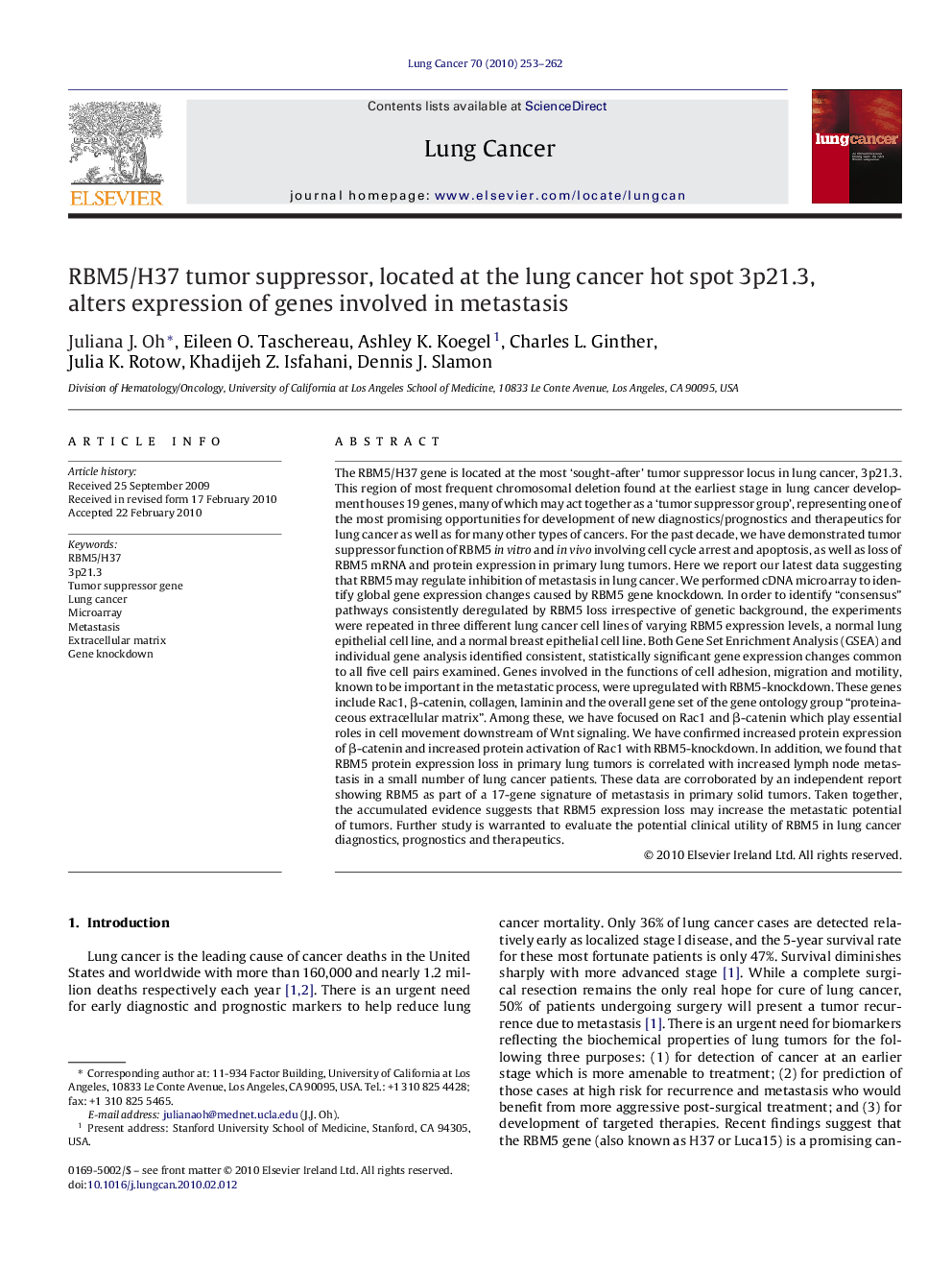| Article ID | Journal | Published Year | Pages | File Type |
|---|---|---|---|---|
| 2141838 | Lung Cancer | 2010 | 10 Pages |
The RBM5/H37 gene is located at the most ‘sought-after’ tumor suppressor locus in lung cancer, 3p21.3. This region of most frequent chromosomal deletion found at the earliest stage in lung cancer development houses 19 genes, many of which may act together as a ‘tumor suppressor group’, representing one of the most promising opportunities for development of new diagnostics/prognostics and therapeutics for lung cancer as well as for many other types of cancers. For the past decade, we have demonstrated tumor suppressor function of RBM5 in vitro and in vivo involving cell cycle arrest and apoptosis, as well as loss of RBM5 mRNA and protein expression in primary lung tumors. Here we report our latest data suggesting that RBM5 may regulate inhibition of metastasis in lung cancer. We performed cDNA microarray to identify global gene expression changes caused by RBM5 gene knockdown. In order to identify “consensus” pathways consistently deregulated by RBM5 loss irrespective of genetic background, the experiments were repeated in three different lung cancer cell lines of varying RBM5 expression levels, a normal lung epithelial cell line, and a normal breast epithelial cell line. Both Gene Set Enrichment Analysis (GSEA) and individual gene analysis identified consistent, statistically significant gene expression changes common to all five cell pairs examined. Genes involved in the functions of cell adhesion, migration and motility, known to be important in the metastatic process, were upregulated with RBM5-knockdown. These genes include Rac1, β-catenin, collagen, laminin and the overall gene set of the gene ontology group “proteinaceous extracellular matrix”. Among these, we have focused on Rac1 and β-catenin which play essential roles in cell movement downstream of Wnt signaling. We have confirmed increased protein expression of β-catenin and increased protein activation of Rac1 with RBM5-knockdown. In addition, we found that RBM5 protein expression loss in primary lung tumors is correlated with increased lymph node metastasis in a small number of lung cancer patients. These data are corroborated by an independent report showing RBM5 as part of a 17-gene signature of metastasis in primary solid tumors. Taken together, the accumulated evidence suggests that RBM5 expression loss may increase the metastatic potential of tumors. Further study is warranted to evaluate the potential clinical utility of RBM5 in lung cancer diagnostics, prognostics and therapeutics.
